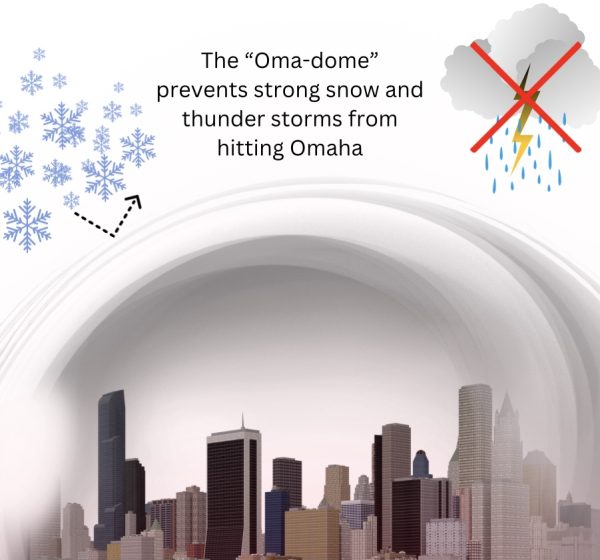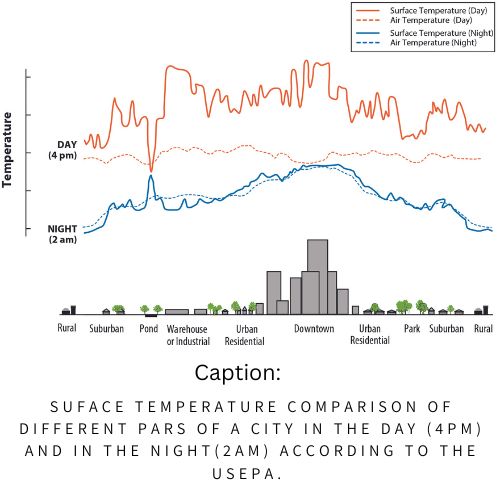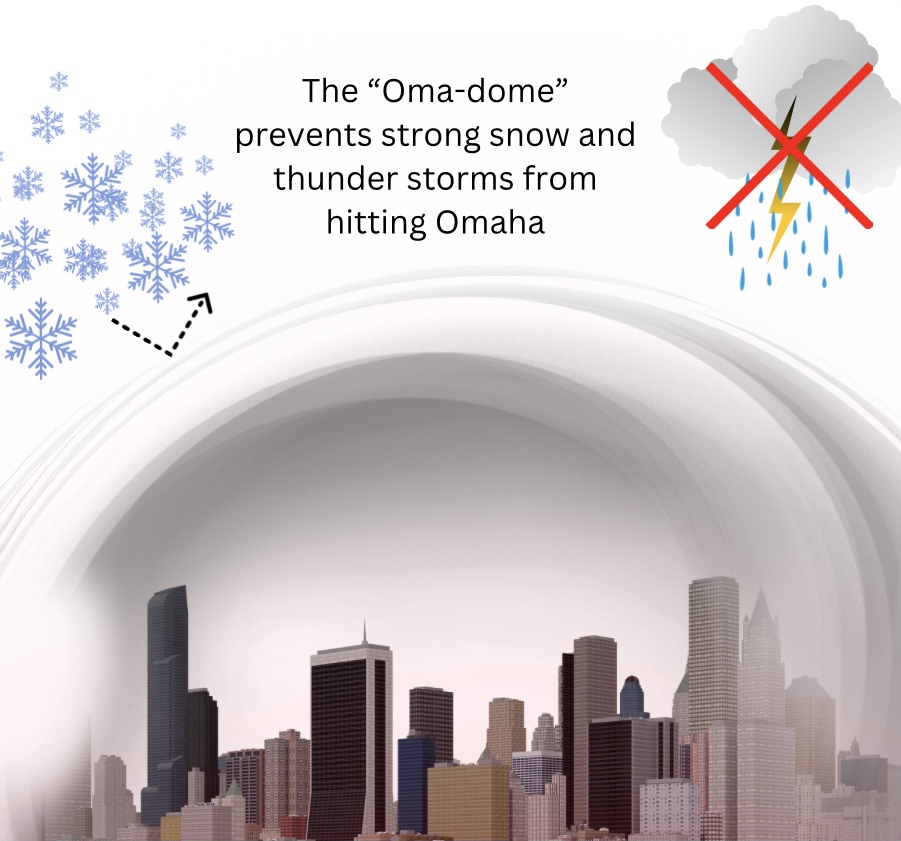 People tend to know about the Super Dome in New Orleans and its’ affiliation with football, but perhaps not as many are familiar with the “Oma-Dome”.
People tend to know about the Super Dome in New Orleans and its’ affiliation with football, but perhaps not as many are familiar with the “Oma-Dome”.
Throughout Omaha’s history, the city has been developing and adapting, but the environment has been struggling to keep up. With massive, abrupt expansion of monstrous concrete buildings, highways/roads, and houses, there have been multiple observations of changing weather patterns around the Omaha area. This begs the questions of why, how, and when this began.
Snowfall record keeping initially began for the greater Omaha area in 1871. Each year, the largest amount of snow to fall in a 24-hour period was noted. The top five snowfalls all occurred before 1966, according to a KETV news report.
Statistically speaking, in the 57 years since, there should have been two to three record breaking 24-hour snowfall totals. However, there has not been a single one in the last half century. Although this may sound like a phenomenon with no explanation, the answer is the “Oma-Dome”.
Large storms consisting of both snow and rainfall generally tend to veer around Omaha and hit the surrounding areas substantially harder. One explanation for this would be a result of urban heat island. Omaha is one of the many cities in the United States that is part of an urban heat island, according to Climate Central.
Urban heat islands can be best described as “islands” of higher temperatures relative to outlying areas, according to the United States Environmental Protection Agency (USEPA). Because of this, Omaha can fall into the category of being an urban heat island.
As stated in the article, Reduce Urban Heat Island Effect, by the USEPA, heat islands can be caused by low tree cover, lack of green space, or energy-efficient building materials, and some places in Omaha lack all three. Pavement, dark surfaces, and a lack of vegetation can also cause urban heat islands, according to ScienceDirect.
Radiation from the sun is often absorbed as heat when plants are replaced with concrete and asphalt used for building roads. Surfaces such as roads absorb the sun’s radiation and in turn gain energy. Eventually, this energy is released into the atmosphere based on an article published by the National Aeronautics and Space Administration (NASA).
According to research conducted by NASA, the majority of the energy released is let out as infrared radiation, which is often felt as hot air. When this warmer air rises, it pushes the colder air out.
Because of the differing temperatures at ground level and in the sky, there are two types of heat islands: atmospheric and surface. Both of these causes altered weather patterns.
Surface heat islands form because surfaces such as roads and rooftops emit more heat than the average natural surface, according to an article by the USEPA.
Atmospheric heat islands are caused by warmer air in urban areas compared to cooler air in outlying areas. Unlike surface heat islands, atmospheric heat islands vary less in temperature intensity based on research by the USEPA.
Omaha Nebraska is an atmospheric heat island. That being said, daily temperatures are not drastically different from those of surrounding areas, but the city still produces a lot of heat that has nowhere to go but up. In other words, Omaha is trapped in a dome of heat, which led to the nickname “Oma-dome”.
As the heat rises, it pushes colder air away, which could lead to storms and snowfall. This is the reason why vigorous weather, and the worst parts of storms often seem to avoid the Omaha area. This is also a possible reason why the summer and fall months appear to stretch out longer than the winter months. 
At the moment, the urban heat island entrapping Omaha is not as harmful to humans or animals compared to other places like Arizona, where heat varies more extensively in relation to surrounding areas. Because Arizona is warm all year round, residents are more likely to use electricity for air conditioning, lights, and appliances. Companies that provide electricity typically use fossil fuels, which leads to an increase in greenhouse gas emissions and air pollutants, according to the USEPA.
If the “Oma-dome” were to become detrimental to the population, there are many solutions that could be put in place in order to decrease the dangers. Planting trees and other vegetation, building green infrastructure improvements into street upgrade plans, and building green roofs would all help decrease the effect of the “Oma-dome” on the community, based on the USEPA.




